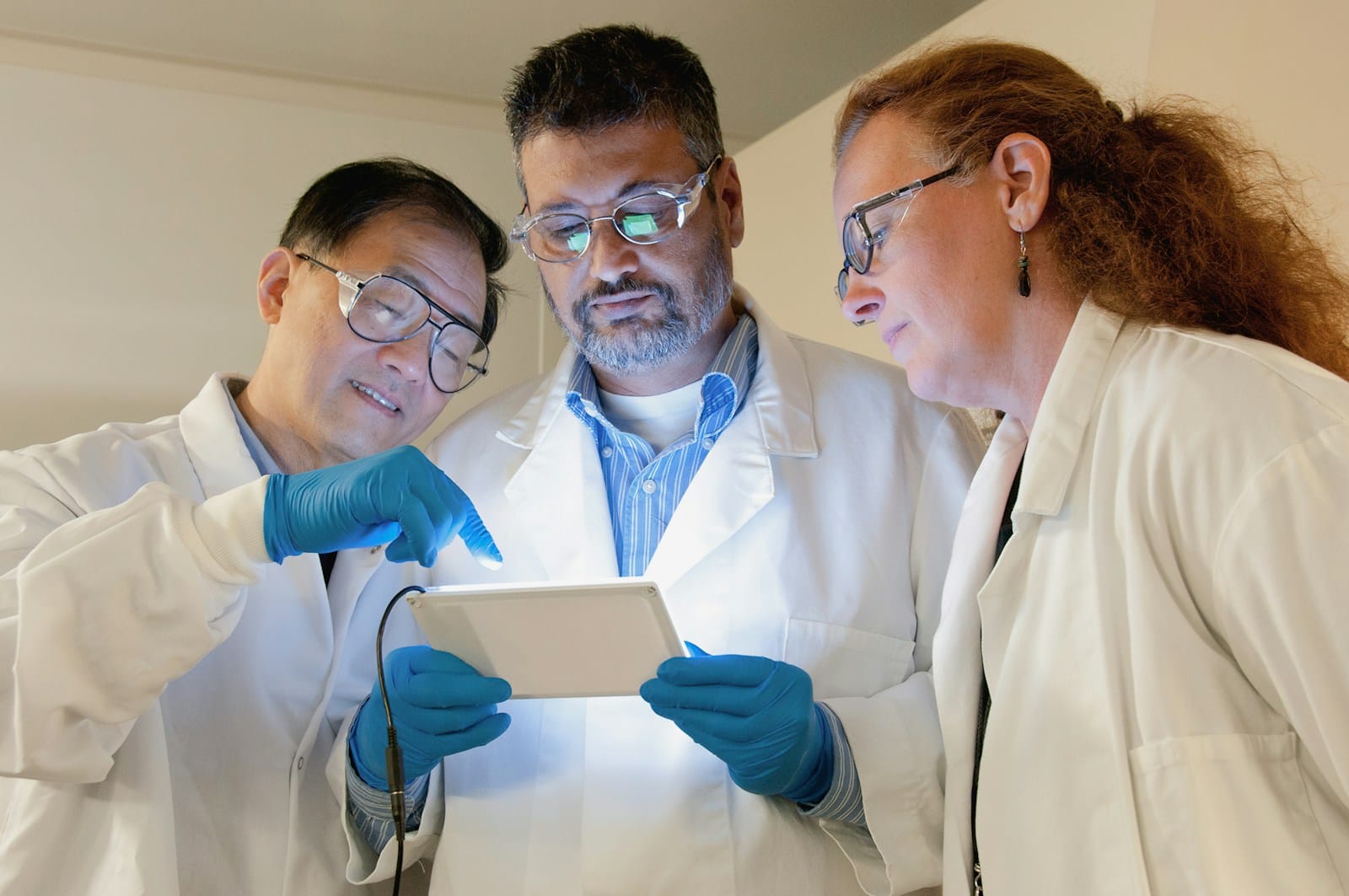Potential Impact of Transparent Ultrasound Transducer on Biomedical Imaging

The recent development of a transparent ultrasound transducer (TUT) by the team at Pohang University of Science and Technology (POSTECH) marks a significant breakthrough in the field of biomedical imaging. The newly-devised TUT, notable for its superior performance and optical transparency, could potentially transform the landscape of biomedical imaging, owing to its ability to display molecular and structural information in real time, without the use of ionizing radiation. This is an invitation to explore the technological aspects of TUT, its potential implications for medical diagnostics and patient safety and its broader applicability in diverse sectors.
A Closer Look at the Transparent Ultrasound Transducer
The TUT conceptualized and developed by POSTECH researchers presents several distinctive attributes that give it an edge over the conventional technologies used in ultrasound imaging. Traditional ultrasound technologies predominantly rely on piezoelectric materials, which unfortunately do not support molecular imaging contrast. On the other hand, the TUT, by harnessing the power of optical transparency, allows for soft tissue structures and molecular markers to be visualized concurrently, a critical feature for early disease detection and intervention.
TUT technology does not use ionizing radiation, thereby enhancing patient safety, particularly for those undergoing multiple scans. Current modalities that facilitate molecular imaging, such as PET and CT scans, often involve exposure to radiation, posing a considerable risk to patients. This makes the TUT a safer choice, especially for vulnerable groups such as children and pregnant women.
What’s more, the practical applications of TUTs extend well beyond the confines of conventional healthcare services. Given their compatibility with mobile devices and robotics, TUTs could be used for remote diagnostics, incorporated into wearable health monitors, and even employed in surgical robots to provide real-time imaging during procedures. The integration of such technology could lead to more compact and efficient designs, improving the accessibility and convenience of advanced imaging for healthcare providers and patients alike.
Medical Diagnosis and Patient Safety: The Repercussions
The capability of TUTs to offer real-time visualization of both molecular and structural information could bring about significant changes in medical diagnosis procedures. With the capacity to detect abnormalities at an earlier stage and with heightened accuracy, healthcare providers would be better equipped to determine effective treatment plans. Additionally, the high sensitivity attributed to the TUT could substantially enhance the monitoring of treatment responses, thereby allowing for timely adjustments to therapies.
From the patient safety perspective, TUTs could bring significant improvements. The non-invasive nature of ultrasound imaging, together with the elimination of radiation exposure, positions the TUT as an ideal and safer alternative for conducting repeated imaging. This would be particularly beneficial for patients suffering from chronic conditions requiring ongoing monitoring.
Potential for Industry Disruption
Beyond medical diagnostics and patient safety, the versatility of the TUT indicates that it could disrupt multiple sectors within the biomedical industry. In the context of mobile health technology, the TUT could be integrated into smartphones and wearable devices, thereby empowering patients to self-monitor certain health aspects. This aligns with the growing trend towards personalized medicine, allowing patients to be more active in managing their health.
In the field of robotics, TUTs could augment the capabilities of surgical robots by granting them an ability to “see through” tissues in real time. This could potentially enhance the precision of surgical interventions, leading to reduced operation times and improved patient outcomes.
The Bottom Line
The transparent ultrasound transducer, as developed by the researchers at POSTECH, holds immense potential to revolutionize biomedical imaging and make a substantial impact on healthcare. By providing a non-invasive, radiation-free, and real-time imaging solution, the TUT can potentially improve medical diagnostics, enhance patient safety, and find applications in various medical settings and devices. The incorporation of this technology into mobile and robotic devices shows promise of even broader implications, paving the way towards the creation of innovative, patient-centric healthcare solutions.
The technology’s development, supported by several dedicated research programs in South Korea, underscores the importance of this innovation and its potential contribution to advancements in healthcare technology. As TUT moves closer to widespread adoption, it is poised to become a transformative tool for diagnosis and treatment of diseases, thereby improving healthcare delivery and patient outcomes.




